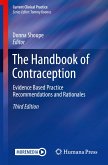Uniquelydesigned for oncologists and general practitioners, this book offers clinicianscomprehensive guidelines when dealing with women at high risk for breastcancer. Written by experts in the field on the cutting edge of this research,the following questions will be answered for the reader by the end of the book:
· Who is at elevated risk for breast cancer?
· Who should be genetically screened?
· When and how often should we obtain imaging?
· What type of imaging is adequate?
· What medications are available for prevention?
· When is surgical intervention appropriate?
· What lifestyle changes should be implemented to prevent thisdisaster?
With one in eight women likely to contract breast cancer in herlifetime, the significance of identifying and managing the high-risk patient isevident. Breakthroughs in the identification of genes associated with breastcarcinoma, particularly BRCA1 and 2,as well as other risk factors, influence not only how patients are screened,but also how they are treated. Breast Cancer Prevention and Treatment providesa guided approach to prevention of breast cancer in women at elevated risk forthis malignancy.
· Who is at elevated risk for breast cancer?
· Who should be genetically screened?
· When and how often should we obtain imaging?
· What type of imaging is adequate?
· What medications are available for prevention?
· When is surgical intervention appropriate?
· What lifestyle changes should be implemented to prevent thisdisaster?
With one in eight women likely to contract breast cancer in herlifetime, the significance of identifying and managing the high-risk patient isevident. Breakthroughs in the identification of genes associated with breastcarcinoma, particularly BRCA1 and 2,as well as other risk factors, influence not only how patients are screened,but also how they are treated. Breast Cancer Prevention and Treatment providesa guided approach to prevention of breast cancer in women at elevated risk forthis malignancy.








